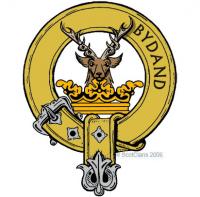
Clan Gordon
Groups
Clan Gordon People
Robert Gordon of Straloch (1580-1661)
The first ever graduate of Marischal College in Aberdeen was Robert Gordon.
He is remembered though for his work as a cartographer. He saved the maps of Thomas Pont in 1640 and worked to complete them for Blau’s Atlas.
His grandson, who lived from 1665 to 1732 was also called Robert and was a successful Danzig merchant. He founded Robert Gordon’s College in Aberdeen.
Patrick Gordon (1635-99)
At sixteen years of age, Gordon was sent to Braunsberg and the Jesuit College. He made his escape from the Jesuits and ended up a mercenary fighter in the eight-year was between Sweden and Poland.
,br> His diary reveals how he would fight for one side until captured, whereupon he would fight for that side until again captured. He became a Russian soldier in 1661 and became a lieutenant-general and the Governor of Kiev. He was a friend of the Tsar Peter the Great and is buried in Moscow.
Sir John Watson Gordon (1788-1864)
Edinburgh-born artist Watson Gordon was a pupil of Raeburn, who changed his life from engineering to painting after meeting Wilkie at Trustee’s Academy drawing classes. He pursued the wealth to be had in portraiture work, and when Raeburn died he moved into the position of Scotland’s premier portrait painter.
The Royal Scottish Academy appointed him their President in 1850.
Seton Paul Gordon (1886-1977)
Ever-kilted from his Aberdeen childhood, through University at Oxford and into his career as a naturalist, the only change in Gordon’s dress code came during the war when he dealt with surveillance of the west Highland coast as part of the RNVR.
His successful writing career included titles such as “Wanderings of a Naturalistâ€, 1921, “Highways and Byways in the West Highlandsâ€, 1935, and “The Golden Eagle, King of Birdsâ€, 1956. His life story is recorded in Raymond Eagle’s 1991 biography, “The Life and Times of a Highland Gentlemanâ€.
The first ever graduate of Marischal College in Aberdeen was Robert Gordon.
He is remembered though for his work as a cartographer. He saved the maps of Thomas Pont in 1640 and worked to complete them for Blau’s Atlas.
His grandson, who lived from 1665 to 1732 was also called Robert and was a successful Danzig merchant. He founded Robert Gordon’s College in Aberdeen.
Patrick Gordon (1635-99)
At sixteen years of age, Gordon was sent to Braunsberg and the Jesuit College. He made his escape from the Jesuits and ended up a mercenary fighter in the eight-year was between Sweden and Poland.
,br> His diary reveals how he would fight for one side until captured, whereupon he would fight for that side until again captured. He became a Russian soldier in 1661 and became a lieutenant-general and the Governor of Kiev. He was a friend of the Tsar Peter the Great and is buried in Moscow.
Sir John Watson Gordon (1788-1864)
Edinburgh-born artist Watson Gordon was a pupil of Raeburn, who changed his life from engineering to painting after meeting Wilkie at Trustee’s Academy drawing classes. He pursued the wealth to be had in portraiture work, and when Raeburn died he moved into the position of Scotland’s premier portrait painter.
The Royal Scottish Academy appointed him their President in 1850.
Seton Paul Gordon (1886-1977)
Ever-kilted from his Aberdeen childhood, through University at Oxford and into his career as a naturalist, the only change in Gordon’s dress code came during the war when he dealt with surveillance of the west Highland coast as part of the RNVR.
His successful writing career included titles such as “Wanderings of a Naturalistâ€, 1921, “Highways and Byways in the West Highlandsâ€, 1935, and “The Golden Eagle, King of Birdsâ€, 1956. His life story is recorded in Raymond Eagle’s 1991 biography, “The Life and Times of a Highland Gentlemanâ€.









